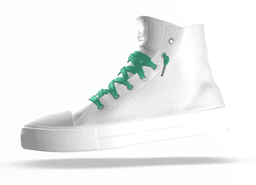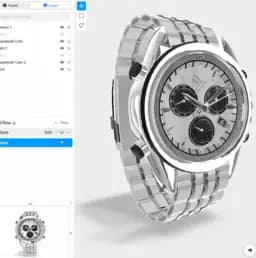Choosing Your Path: AR.js vs WebXR
For developers prioritizing brevity and ease of implementation, AR.js is your go-to; its marker-based AR system and library ease lend well to simpler applications. For those eyeing high-precision, immersive experiences and cross-platform adaptability, WebXR is a superior choice despite needing proficient 3D data management skills.

Key Differences Between AR.js and WebXR
- AR.js uses marker-based AR and pre-defined triggers while WebXR supports both VR and AR applications, including handheld inputs.
- AR.js eases development by providing HTML+CSS and Vanilla JavaScript approach compared to WebXR which requires handling of rendering and texturing.
- WebXR supports a broader array of devices: HTC Vive, Oculus Rift, Google Cardboard and more; however, AR.js is compatible with ARKit and ARCore.
- AR.js enables creation of Web AR experiences on-the-fly, while WebXR mandates a deeper understanding of VR/AR concepts for deployment.
| Comparison | AR.js | WebXR |
|---|---|---|
| Development Purpose | Augmented Reality Web Apps | VR and AR evolution |
| Key Features | Marker Types, Geolocation, 3D Model Integration, lightning/shading, image tracking, interactive features, animation, customization | Device Detection, Movement Vector Translation, 3D Scene Rendering |
| Type of AR | Marker-based and Marker-less | AR and VR (Mixed Reality) |
| Compatibility | Compatible with ARKit, ARCore, iOS and Android devices | Supported by several stable versions of browsers including Edge, Chrome 79+, Opera 66+, Opera Mobile 64+ Samsung Internet 12+, Oculus |
| Diffraction with Killing | Use of specific libraries, Predefined markers trigger virtual content | Addressing performance drops, large data volume and device communication security |
| On-the-fly Creation | Yes | No |
| Fallbacks | No | Fallbacks from experimental WebVR |
| Presenting Content | Marker-images trigger 3D model display | Web applications present content in AR and VR using WebGL |
| Rendering Technology | No | No |
What Is AR.js and Who’s It For?
AR.js is the staple accessory for modern developers looking to incorporate augmented reality into their web applications. Built on the foundation of the popular WebAR standard, AR.js is primarily aimed at creating seamless AR experiences for users without relying on high-end equipment or complex coding processes.
AR.js is a perfect tool for individuals or businesses wanting to boost engagement via interactive websites and applications. It is ideal for both marker-based and marker-less AR applications, streamlining the development to showcase 3D models or logos, with customizable options readily available to suit particular needs.

Pros of AR.js
- Enables seamless development for AR web apps.
- Easy project implementation with example code.
- Supports both marker-based and marker-less AR.
- Compatible with iOS and Android devices.
Cons of AR.js
- Requires inclusion of specific libraries for project implementation.
- The need for either local code testing or deployment for the final step.
- Does not support 3D data management or its display.
What Is WebXR and Who’s It For?
In the tech-sphere of virtual and augmented reality, WebXR is a recognized leader. This SOP platform unifies VR and AR to make the creation of 3D art and VR tools easily accessible. WebXR is intended for businesses, developers, and enthusiasts who want to develop or experience immersive 3D art, VR tools, and other interdisciplinary applications.
WebXR is an API that detects and locates VR or AR devices, translates movement vectors, and shows off spectacular 3D scenes. If you desire accessible, future-proof, and cross-platform applications, WebXR might be your best choice.

Pros of WebXR
- Unifies VR and AR realities for easier creation of immersive 3D art and VR tools.
- Addresses performance drops, large data volume, and device communication security.
- Allows browser-based cross-platform apps making it future-proof.
Cons of WebXR
- Anticipates issues with potential glitches as it relies on low latency and high precision.
- Does not manage 3D data or its display, developers expected to handle rendering and texturing.
- Traditional communication methods like Web Sockets may not be fast enough.
Code Examples for AR.js & WebXR
AR.js
This code example demonstrates how to create an interactive AR scene using AR.js and A-Frame. Place a 3D model in augmented reality that can be interacted with, via touch or click. Ensure to include AR.js and A-Frame libraries in your project beforehand for smooth operation.
<a-scene embedded arjs='sourceType: webcam;'>
<a-entity camera>
<a-entity
cursor='rayOrigin: mouse;
fuse: false;
fuseTimeout: 2000;'
position='0 0 -1'
geometry='primitive: ring; radiusInner: 0.02; radiusOuter: 0.03;'
material='color: black; shader: flat;'>
</a-entity>
</a-entity>
<a-marker preset='hiro'>
<a-entity
obj-model='obj: url(PATH_TO_OBJ); mtl: url(PATH_TO_MTL)'
scale='0.5 0.5 0.5'
event-set__1='_event: mousedown; scale: 1 1 1;'
event-set__2='_event: mouseup; scale: 0.5 0.5 0.5;'
event-set__3='_event: mouseleave; scale: 0.5 0.5 0.5;'>
</a-entity>
</a-marker>
<a-entity camera position='0 0 5;'></a-entity>
</a-scene>WebXR
Here’s a fun WebXR example that creates a spinning cube in 3D space. Ensure your project includes THREE.js and the WebXR API. Also, the device should have WebXR capabilities for optimal functionality.
let renderer = new THREE.WebGLRenderer();
let scene = new THREE.Scene();
let camera = new THREE.PerspectiveCamera();
let geometry = new THREE.BoxGeometry(1, 1, 1);
let material = new THREE.MeshBasicMaterial({ color: 0xFFFFFF });
let cube = new THREE.Mesh(geometry, material);
scene.add(cube);
renderer.xr.enabled = true;
document.body.appendChild(VRButton.createButton(renderer));
camera.position.z = 5;
renderer.render(scene, camera);
function animate() {
cube.rotation.x += 0.01;
cube.rotation.y += 0.01;
cube.rotation.z += 0.01;
renderer.render(scene, camera);
requestAnimationFrame(animate);
}
animate();The Final Showdown: AR.js or WebXR?
After dissecting the technicalities of both AR.js and WebXR, it’s time to decide. The choice hinges on specific needs and project interests.
Developers Harnessing AR Experiences for Web
For those keen on creating AR experiences with web applications, AR.js is your clear winner. It comes with a lightweight JavaScript library, supports a bevy of AR types, is compatible with both ARKit and ARCore, and offers on-the-fly AR experiences creation.
Enthusiasts Targeting both AR and VR Experiences
If your target is unified AR and VR experiences, choose WebXR. It offers rapid data processing, low-latency performance, and most importantly, supports both VR and AR experiences from the same API.
Adventurous Coders Plunging into 3D and Immersive Art
Are you a daring coder who’s not afraid to dabble in 3D and immersive art? Then WebXR should be your preferred choice; backed by robust communities and toolkits, enabling rapid deployment, and supporting cross-platform apps.
The choice between AR.js vs WebXR is largely dependent on project specifics. However, if the goal is web-based AR integration, AR.js shines. Conversely, for ambitious AR/VR applications, WebXR emerges triumphant. Decide with intent, code with precision.







